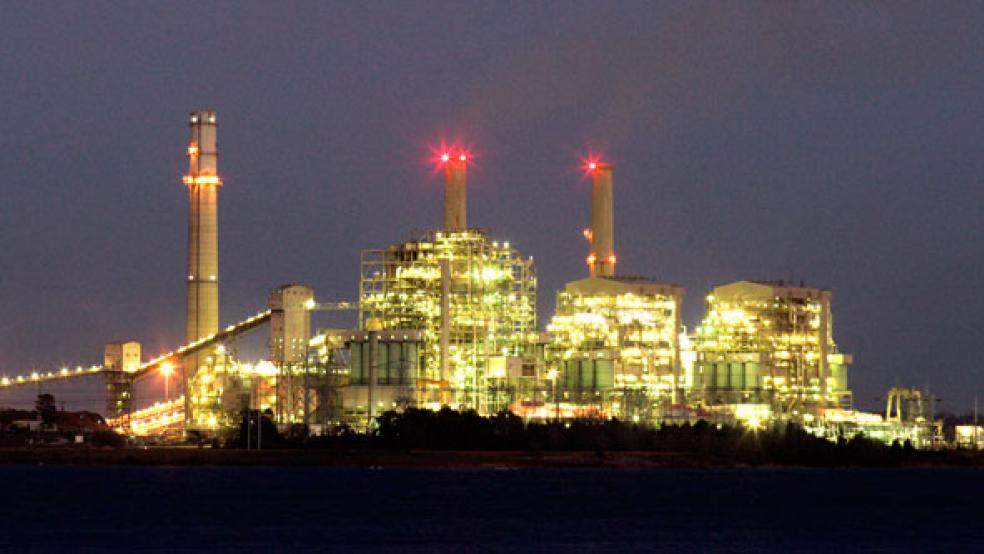Like a teenager with $20 in his pocket, President Obama cannot spend our natural gas bonanza fast enough.

We could use our newfound cheap energy to drive a manufacturing renaissance and create jobs, but the president wants to squander it combatting pollution. Heather Zichal, White House coordinator for energy and climate change, explains the president’s motivation: “He knows this is a legacy issue.”
In a major address on energy and the environment at Georgetown University, Mr. Obama said he will direct the EPA to set emissions standards on power plants – limits that will drive up electricity costs, tax our economy and slow growth. This, despite the fact that CO2 emissions in the U.S. have dropped 12 percent in the past five years, are down to 1996 levels, and may well have peaked.
RELATED: WHY OBAMA'S PLAN TO CUT CARBON EMISSIONS COULD BE DOA
His proposal risks undermining the energy cost advantage over Europe and Japan that the U.S. enjoys today. Since 2005, the EU and Japan have seen electricity costs jump 40 percent and 20 percent, respectively; in the U.S., the price of electricity has dropped 5 percent, giving domestic producers a huge advantage.
European manufacturers are flocking to the U.S., attracted by electricity and natural gas costs that run about 50 percent and 75 percent below those at home. Companies like BMW and Austrian steel maker Voestalpine are providing jobs for American workers. Those are the kinds of jobs that Mr. Obama has declared to be the top priority for his administration. Unless, apparently, the “legacy” hunt intervenes.
In 2007, the Supreme Court gave the EPA authority under the Clean Air Act to regulate greenhouse gas emissions. Accordingly, the White House issued rules in 2012 covering emissions on new power plants. The limits were so severe as to effectively ban construction of new coal facilities. Meanwhile, the complexity of the issues involved meant that the EPA failed to meet the April deadline for writing those regulations.
Undaunted, now the administration wants to set carbon emission limits for our entire power industry, which accounts for about 40 percent of greenhouse gasses. The real target is coal -- which Mr. Obama referred to as “dirtier fuel sources.” Coal accounts for some 28 percent of our nation’s emissions, but it is plentiful and cheap. It is also especially important to the Midwest – our manufacturing belt, because of its proximity.
Coal is already declining in importance, accounting for about 35 percent of electric generation today, down from more than 50 percent in the past. Cheap natural gas has largely filled the gap, today providing 30 percent of electricity generation, up from 15 percent in 2005. Because our natural gas resources have expanded exponentially, this process will likely continue--we do not need another round of complex and expensive regulations.
The Edison Institute has noted that where coal is displaced by natural gas, “mercury, SO2 emissions will be virtually eliminated and CO2 emissions [will be] reduced by almost half.” According to the Yale Forum on Climate Change and the Media, “a kilowatt hour of electricity from natural gas has only about one-third the direct CO2 emissions as a kilowatt hour generated from coal.”
U.S. emissions have also declined because our economy – and especially manufacturing -- has been in a slump. The trend, however, has persisted in the past few years of recovery. Overall, our per-person consumption of energy is down 20 percent -- to the lowest level since Eisenhower occupied the White House.
Zake Hausfather, writing for the Yale Forum, analyzes the “dramatic and largely unexpected decline in U.S. CO2 emissions” and concludes, “A case can now be made that U.S. CO2 emissions may have peaked.” This is good news, and makes the president’s move to reorder our power industry especially misguided.
Unemployment remains high, the nation is anxiously eyeing the roll-out of Mr. Obama’s sweeping healthcare program, the financial industry faces sizeable uncertainty because of the evolving Dodd-Frank regulations and the Federal Reserve confronts the challenge of winding down its quantitative easing efforts. It is not the time to tackle another polarizing industry-wide program which will likely raise electricity costs directly, and also reduce the power industry’s flexibility.
And, there are big risks. In the past, the price of natural gas has been highly volatile. That is still true today. Natural gas prices dropped from about $12 per million BTU in 2008 to about $2 in 2012, spurring the increase in demand. However, industry journal Platts reported that in February gas prices soared, driving a short-term switch from gas to coal.
Citing an EIA report, Platt’s noted that consumption of natural gas dropped 12 percent in that month, though electricity consumption increased by 1 percent. Filling the gap was coal--demand rose 7 percent.
Multiple energy sources have helped our power industry to provide reliable and inexpensive electricity for decades. Ongoing displacement of coal by gas looks nearly certain, but the industry needs the flexibility to cope with short-term deviations from the trend – flexibility that could vanish with the president’s program.
Europeans have seen what high energy costs can do to their economies. Country after country, faced with high unemployment, has abandoned damaging green policies, to boost growth. Bjorn Lomborg, writing for Slate, notes, “Since 1990, the EU has heavily subsidized solar and wind energy at a cost of more than $20 billion annually. Yet its per capita CO2 emissions have fallen by less than half of the reduction achieved in the U.S.—even in percentage terms, the U.S. is now doing better.”
In 2008, President Obama promised that if elected, future generations would say, “This was the moment when the rise of the oceans began to slow and our planet began to heal.” The surprise is, that the oil and natural gas industries – and not Mr. Obama - have already put us on that path.






